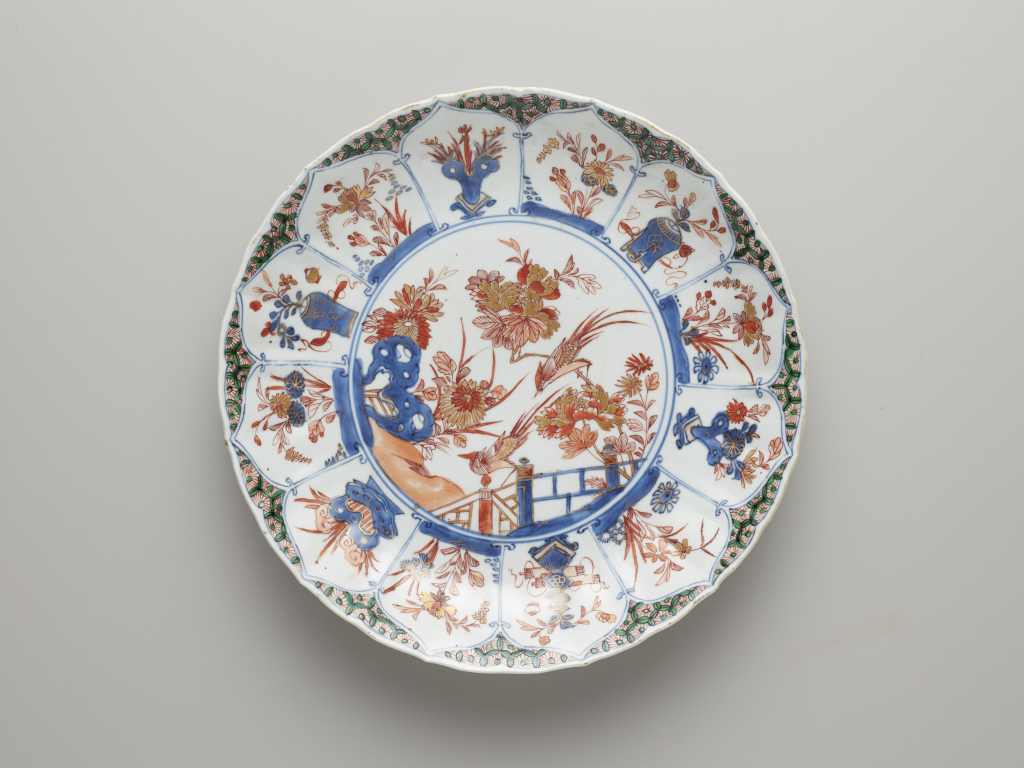The end and the continuity of Kakiemon
- Japanese Ewer
The Kakiemon porcelain style remained in high demand during the last decades of the 17th century. It was imported by the VOC (Dutch East India Company), but was also occasionally traded privately. As we have seen, this porcelain piece was created exclusively for export and was in a way ‘nationalized’ by the placement of the local mount featuring Dionysus and Silenus. The popularity of such ewers was immense, as we have seen from the Dutch still-life paintings that feature similar pieces. Perhaps this ewer, just like the ones depicted in the paintings, was placed on the table in a wealthy Dutch household, functioning as a wine container. Exotically decorative, but with a ‘nationalized’ touch - the Dutch silver mount - it emitted wealth and high social status.
The popularity and usage of Kakiemon, however, decreased considerably around 1720-1730, and was overtaken by Chinese porcelain. Jingdezhen potters in China returned to competitive production and started producing porcelain that was roughly four times cheaper compared to the Japanese Kakiemon. As a result, Jingdezhen potters became the main manufacturers for export to Western markets. However, the Chinese had to imitate the colorful Japanese decorations to appeal to the newly acquired taste of Europeans, thereby developing the ‘Chinese Imari” style. This absorption of elegant, colorful, asymmetrical and decorative Japanese elements, which distinguished the Japanese porcelain from the Chinese before, was now being absorbed by the Chinese to an extent where it became difficult to distinguish them.
Although the popularity of Kakiemon decreased, it never ceased to exist. Throughout the 18th and 19th centuries, Kakiemon style porcelain was still being produced and exported to Europe in small amounts. The Sakaida family, which was first mentioned in the Japanese legend before, exists to this day with the current heir Sakaida Kakiemon XV (born 1968). He continues the Kakiemon family porcelain industry after the death of Sakaida Kakiemon XIV in 2013, who was in 2001 named a living national treasure by the Japanese government. The secrets and technology of Kakiemon are being passed down the generations. With each new heir, new additional elements to the porcelain are being considered. The current heir Sakaida XV focuses on producing a new Kakiemon style that is, according to him, in connection with both current the way of life and the old traditions that have to be kept alive. His goal is to return to the 17th century style, while ceasing to use red pigments which were very characteristic of the original style, as we can clearly see in our ewer.
](https://micrio.thingsthattalk.net/cuGOB/views/max/841x640.s.jpg)
Chinese Imari porcelain vases, late 17th century, Kangxi period (1662-1722) - Gallery Lamy, Brussels
](https://micrio.thingsthattalk.net/OeQow/views/max/853x640.s.jpg)
Chinese Imari plate ca. 1720-1740 - [Portland museum of art](http://portlandartmuseum.us/mwebimages/IMAGES/PERMANENT COLLECTION/2010/2010_0036_0016_01_P.jpg)
](https://micrio.thingsthattalk.net/cdQLU/views/max/925x640.s.jpg)